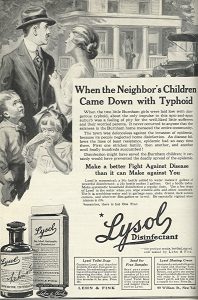Do you suppose the Vatican does a risk assessment analysis before publishing an encyclical? Can you think of a time the Holy See indemnified itself against potentially harmful, if unforeseeable, consequences of papal geopolitics? Do you remember ever having read a collection of theological essays that was followed by a legal disclaimer? Some formal language that warns you against relying on the contents? Or distances itself from any truth claims therein?
Me neither.
That is what is so telling about the full-page product warning—what else to call it?—that appears at the end of the 256-page syllabus for the Vatican’s recent “Global Health Care Initiative.” The Cura Foundation, the Pontifical Council for Culture, plus sundry others took care to indemnify themselves against naive reliance on any content promoted by themselves at their own trade fair.
Lawyerly boilerplate begins by exempting conference participants from liability for whatever might go wrong if you take things too earnestly. It testifies that nothing presented at the conference necessarily reflects the views of the very people and parties—the Cura, the Council, et alia—who organized this three-day event and chose its players. All is general information, not to be taken as gospel: “No action or inaction should be taken based solely on the contents of this information.”
 My Sunbeam steam iron came with a tag that warned me not to iron my clothes while wearing them. The Vatican’s disclaimer could have been written by the same lawyer and for the same bonehead shoppers: “Never disregard professional medical advice or delay in seeking it because of something you have gathered from the conference materials.”
My Sunbeam steam iron came with a tag that warned me not to iron my clothes while wearing them. The Vatican’s disclaimer could have been written by the same lawyer and for the same bonehead shoppers: “Never disregard professional medical advice or delay in seeking it because of something you have gathered from the conference materials.”
The legalese heats up:
The Cura Foundation, the Vatican’s Pontifical Council for Culture, and all of the supporters, sponsors and grantors as well as their affiliates make no representation and assume no responsibility for the accuracy of the information contained on or available through the conference materials, and such information is subject to change without notice.
No responsibility for accuracy. Refashioned as a statement instead of a question, that is the non-philosophical variant of “What is truth?” Pontius Pilate already had his answer: conformity to reality is flexible. Audience, take note:
The Cura Foundation, the Vatican’s Pontifical Council for Culture, and all of the supporters, sponsors and grantors, as well as their affiliates, do not recommend, endorse or make any representation about the efficacy, appropriateness or suitability of any specific tests, products, procedures, treatments, services, opinions, health care providers or other information that may be contained on or available through the conference materials.
Redundant, the disclaimer rises to a crescendo in ALL CAPS before it drops to a diminuendo in the last line:
THE CURA FOUNDATION, THE VATICAN’S PONTIFICAL COUNCIL FOR CULTURE, AND ALL OF THE SUPPORTERS, SPONSORS AND GRANTORS AND THEIR AFFILIATES ARE NOT RESPONSIBLE NOR LIABLE FOR ANY ADVICE, COURSE OF TREATMENT, DIAGNOSIS OR ANY OTHER INFORMATION, SERVICES OR PRODUCTS THAT YOU OBTAIN THROUGH THE CONFERENCE MATERIALS. In the event of a medical emergency, call a doctor or 911 immediately.
If only out of regard for the graphics of page design, that final aviso should stand alone on a line by itself. The visual incongruity of the lower case font tacked on to an emphatic disavowal corresponds to the incongruity of Vatican posturing in the trade show world. And on behalf of the biotech industry.

A few weeks after the conference ended, Cura Foundation mailed a 40-page follow-up brochure. It prodded recipients [those who registered in advance of the conference] to “think of the Cura Foundation as you invest your time, energy, and dollars.” Included was a handy postcard insert that allowed you to check off which part of the world—Africa? Brazil? India?—you wanted to save from COVID with a donation.
Would funds be used to distribute inexpensive, available therapeutics? Would it further manufacturing capability for effective repurposed drugs in places with a check box next to their name on the postcard? Nothing specific is mentioned. There is nothing to account for. There is only the emotional appeal that opens purses.
The brochure closed with a repetition of the earlier disclaimer with its reminder that “No action or inaction should be taken based solely on the contents of this information.” No action, that is, except sending money to Cura, which provides philanthropic cover—impetus, if you prefer—for advancing the profile and profitability of the corporations which Robin Smith represents.
• • • • •
It is hard to let go of this nominal conference. It illustrates much about the condition of the current Vatican—certainly Ravasi’s Pontifical Council for Culture. Its sensibilities and ambitions are on full display for anyone willing to look.
Disclaimers exist to limit or evade the liability that comes with the sale of a product. The need for one in this instance testifies to the fundamental commercial nature of the Vatican conference. Ravasi’s Pontifical Council, together with Robin Smith’s Cura Foundation, showcases investment opportunities in the biotech market. This is high salesmanship veiled by symbiotic affiliation with the non-profit sector, a trillion dollar industry.
• • • • •
The Pontifical Council announced its initial partnership with NeoStem, a biotech company in 2011. It was a coup for Smith, NeoStem’s owner/director at the time. A professional persuader, she described Vatican financial backing as being “like when you have the Good Housekeeping seal of approval.” David Ogilvy, a legend in the ad game since the Sixties, could not have said it better. Nor could it have been more apropos.

In substantial ways, this year’s Vatican’s conference “to explore the mind, body, and soul,” conducted over Zoom, was a digital age heir to Good Housekeeping. A 2005 article in The Historian, “Women’s Health Information In Good Housekeeping’s Articles and Advertisements, 1920-1965” resonates today, perhaps more now than ever.
In the forty-five year span under scrutiny, the magazine “consciously set itself up as a source of authoritative advice. Its team of medical experts included physicians and health reporters addressing topics like child care, nutrition, and medicine. And its advertising department developed its own expertise through its ‘seal of approval’ tests and guarantees of advertised products.”
In the era before internet searches and sites like WebMD (heavily funded by pharmaceutical companies), women turned to popular magazines. Here were tips on everything from beauty and diet to mental attitudes, common diseases, and treatments. Good Housekeeping ads “often leaned on medical and scientific authority. In a 1940 ad, for example, Holly-Pax tampons made a point to say that its brand ‘is accepted for advertising in the Journal of the American Medical Association.’”
Ads may have been misleading but they espoused the new standards of health and hygiene.
Good Housekeeping‘s team of medical “experts” included both trained physicians and professional health reporters. (Think of the latter as precursors to Max Gomez, Cura’s media genie.) Add corporate executives to the mix. Resemblance to the make-up of conference “authorities” at the Vatican in May appears uncannily similar.
• • • • •
The entrepreneurial Dr. Smith knows her job. If only Cardinal Ravasi, ordained a priest, knew his.


